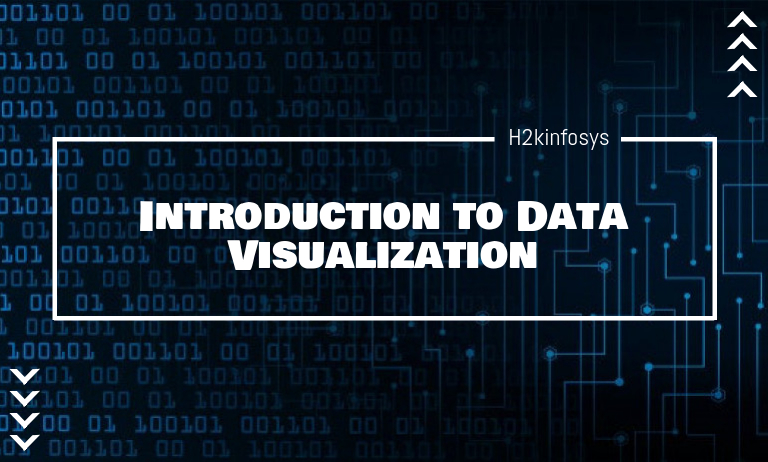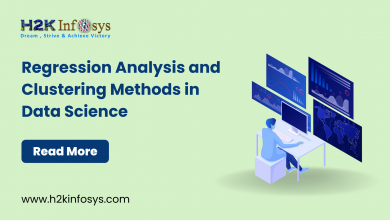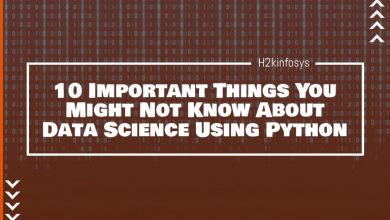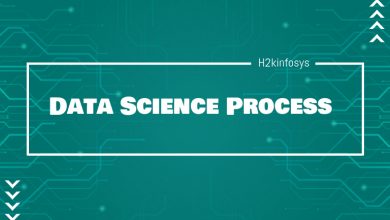Introduction to Data Visualization

If you’re at all familiar with data analysis, then you’ve encountered data visualization. It is a key part of data analysis. We’ll explain how it is used and discuss each of the different types of visualizations, but first, let’s make sure we all understand what it is and why it’s important.
What is data visualization and why is it important?
Data visualization is the representation of data or information in a graph, chart, or another visual format. It communicates the relationships of the data with images. This is important because it allows trends and patterns to be more easily seen. With the rise of big data, the need to be able to interpret increasingly larger batches of data is impending. Machine learning makes it easier to conduct analyses such as predictive analysis, which can then serve as helpful visualizations to present. But data visualization is not only important for data scientists and data analysts, it is necessary to understand data visualization in any career. Whether you work in finance, marketing, tech, design, or anything else, you need to visualize data. That fact showcases the importance of data visualization.
To communicate information clearly and efficiently, data visualization uses statistical graphics, plots, information graphics, and other tools. Numerical data may be encoded using dots, lines, or bars, to visually communicate a quantitative message. Effective visualization helps users analyze and reason about data and evidence. It makes complex data more accessible, understandable, and usable. Tables are generally used where users will look up a specific measurement, while charts of various types are used to show patterns or relationships in the data for one or more variables.
Data visualization is both an art and a science. It is viewed as a branch of descriptive statistics by some, but also as a grounded theory development tool by others. The main goal of data visualization is to communicate information clearly and efficiently to users. It is one of the steps in data analysis or data science. It doesn’t mean that data visualization needs to look boring to be functional or extremely sophisticated to look beautiful.
Why do we need data visualization?
We need data visualization because a visual summary of information makes it easier to identify patterns and trends than looking through thousands of rows on a spreadsheet. It’s the way the human brain works. Since the purpose of data analysis is to gain insights, data is much more valuable when it is visualized. Even if a data analyst can pull insights from data without visualization, it will be more difficult to communicate the meaning without visualization. Charts and graphs make communicating data findings easier even if you can identify the patterns without them.
In undergraduate business schools, students are often taught the importance of presenting data findings with visualization. Without a visual representation of the insights, it can be hard for the audience to grasp the true meaning of the findings. For example, rattling off numbers to your boss won’t tell them why they should care about the data, but showing them a graph of how much money the insights could save/make them is sure to get their attention.
Characteristics of efficiently visualized data
Visualizations should display the following :
- Induce the viewer to think about the substance rather than about methodology, graphic design, the technology of graphic production, or something else
- Avoid distorting what the data has to say
- Present many numbers in a small space
- Make large data sets coherent
- Encourage the eye to compare different pieces of data
- reveal the data at several levels of detail, from a broad overview of the fine structure
- Serve a reasonably clear purpose: description, exploration, tabulation, or decoration
- Be closely integrated with the statistical and verbal descriptions of a data set.
How is data visualization used?
Data visualization has many uses. Each type of data visualization can be used in different ways. Here are some of the most common ways data visualization is used.
Changes over time
This is perhaps the most basic and common use of data visualization, but that doesn’t mean it’s not valuable. The reason it is the most common is that most data has an element of time involved. Therefore, the first step in a lot of data analyses is to see how the data trends over time.
Determining frequency
Frequency is also a fairly basic use of data visualization because it also applies to data that involves time. If time is involved, it is logical that you should determine how often the relevant events happen over time.
Determining relationships ( Correlations )
Identifying correlations is an extremely valuable use of data visualization. It is extremely difficult to determine the relationship between two variables without a visualization, yet it is important to be aware of relationships in data. This is a great example of the value of data visualization in data analysis.
Examining a network
An example of examining a network with data visualization can be seen in market research. Marketing professionals need to know which audiences to target with their message, so they analyze the entire market to identify audience clusters, bridges between the clusters, influencers within clusters, and outliers.
Scheduling
When planning out a schedule or timeline for a complex project, things can get confusing. A Gantt chart solves that issue by clearly illustrating each task within the project and how long it will take to complete it.
Analyzing value and risk
Determining complex metrics such as value and risk requires many different variables to be factored in, making it almost impossible to see accurately with a plain spreadsheet. Data visualization can be as simple as color-coding a formula to show which opportunities are valuable and which are risky.
Different types of data visualization
Now that we understand how data visualization can be used, let’s apply the different types of data visualization to their uses. There are numerous tools available to help create data visualizations. Some are more manual and some are automated, but either way, they should allow you to make any of the following types of visualizations.
Line chart
A line chart illustrates changes over time. The x-axis is usually a period, while the y-axis is quantity. So, this could illustrate a company’s sales for the year broken down by month or how many units a factory produced each day for the past week.
Area chart
An area chart is an adaptation of a line chart where the area under the line is filled in to emphasize its significance. The color fill for the area under each line should be somewhat transparent so that overlapping areas can be discerned.
Bar chart
A bar chart also illustrates changes over time. But if there is more than one variable, a bar chart can make it easier to compare the data for each variable at each moment in time. For example, a bar chart could compare the company’s sales from this year to last year.
Histogram
A histogram looks like a bar chart, but measures frequency rather than trends over time. The x-axis of a histogram lists the “bins” or intervals of the variable, and the y-axis is frequency, so each bar represents the frequency of that bin. For example, you could measure the frequencies of each answer to a survey question. The bins would be the answer: “unsatisfactory,” “neutral,” and “satisfactory.” This would tell you how many people gave each answer.
Scatter plot
Scatter plots are used to find correlations. Each point on a scatter plot means “when x = this, then y equals this.” That way, if the points trend a certain way (upward to the left, downward to the right, etc.) there is a relationship between them. If the plot is truly scattered with no trend at all, then the variables do not affect each other at all.
Bubble chart
A bubble chart is an adaptation of a scatter plot, where each point is illustrated as a bubble whose area has meaning in addition to its placement on the axes. A pain point associated with bubble charts is the limitations on the sizes of bubbles due to the limited space within the axes. So, not all data will fit effectively in this type of visualization.
Pie chart
A pie chart is the best option for illustrating percentages because it shows each element as part of a whole. So, if your data explains a breakdown in percentages, a pie chart will present the pieces in the proper proportions.
Gauge
A gauge can be used to illustrate the distance between intervals. This can be presented as a round clock-like gauge or as a tube-type gauge resembling a liquid thermometer. Multiple gauges can be shown next to each other to illustrate the difference between multiple intervals.
Map
Much of the data dealt with within businesses has a location element, which makes it easy to illustrate on a map. An example of a map visualization is mapping the number of purchases customers made in each state in the U.S. In this example, each state would be shaded in, and states with fewer purchases would be a lighter shade, while states with more purchases would be darker shades. Location information can also be very valuable for business leaders to understand, making this an important data visualization to use.
Heat map
A heat map is a color-coded matrix. A formula is used to color each cell of the matrix is shaded to represent the relative value or risk of that cell. Usually, heat map colors range from green to red, with green being a better result and red being worse. This type of visualization is helpful because colors are quicker to interpret than numbers.
Frame diagram
Frame diagrams are treemaps that clearly show a hierarchical relationship structure. The Frame diagram consists of branches, which each have more branches connecting to them with each level of the diagram consisting of more and more branches.
Conclusion
Effective data visualization is the crucial final step of data analysis. Without it, important insights and messages can be lost.






4 Comments